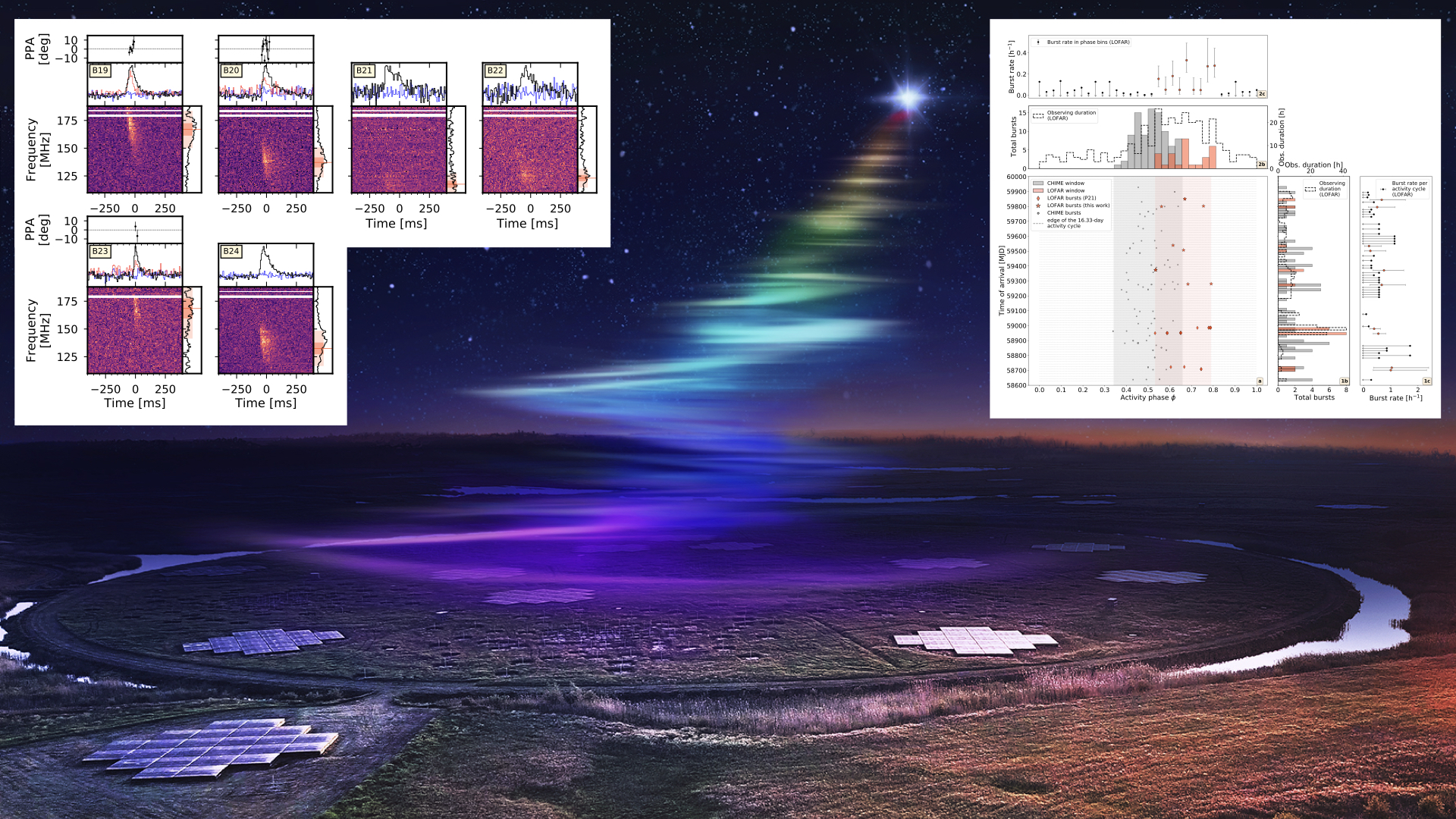Daily Image
08-01-2024LOFAR long-term monitoring of the periodically active FRB 20180916B
| Submitter: | Akshatha Gopinath & Jason Hessels |
| Description: | FRB 20180916B is a fascinating fast radio burst (FRB) source that becomes active every 16.3 days, but apparently not at the same time at all observable radio frequencies. It is also one of only two repeating FRBs to be detected using the LOFAR high-band antennas (HBAs), from 110-188 MHz. In a recent "Gopinath et al." paper published in MNRAS, we present a multi-year monitoring campaign on FRB 20180916B. We discovered 11 new bursts, five of which are shown in the upper-left of this image. This increases the number of LOFAR-detected bursts by 50%, but more importantly: we are now able to better test whether FRB 20180916B consistently becomes active at lower radio frequencies at later times in its 16.3-day cycle. We found that FRB 20180916B's activity cycle is strictly periodic and that the LOFAR bursts at 110-188 MHz consistently appear several days later than the peak in activity seen in the 400-800 MHz band with CHIME - over a 3.5-year span! This is illustrated by the figure in the upper-right of the image, where the CHIME activity window is shaded in grey and the LOFAR activity window is shaded in orange. In the paper, we discuss these results in the context of models that invoke rotation, precession, or binary orbital motion to explain the periodic activity of FRB 20180916B. The exact cause remains a conundrum. For example, our LOFAR observations also show that FRB 20180916B's Faraday rotation measure is varying with time, but that these variations don't follow the 16.3-day activity cycle. While FRB 20180916B is providing important clues to deciphering the mysterious origins of FRBs, continued, multi-frequency monitoring of this and other repeating FRBs is needed to solve the puzzle. |
| Copyright: | Futselaar/ASTRON |
| Tweet |  |
